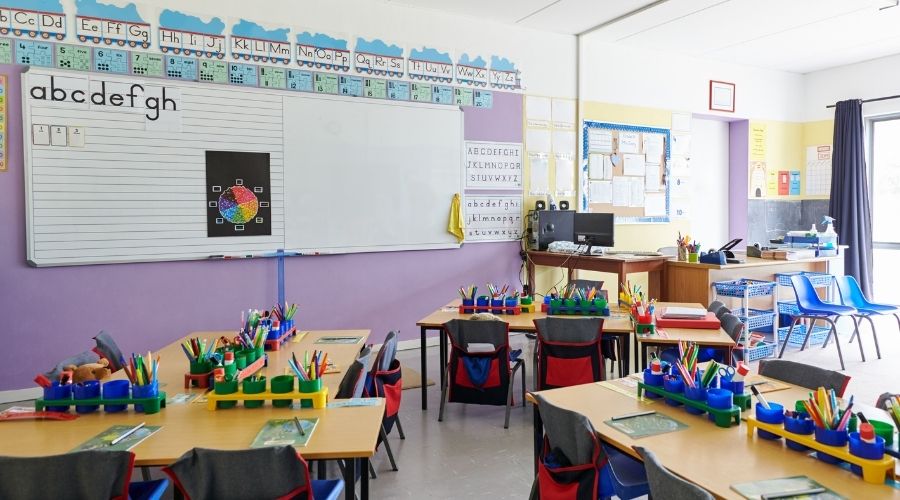
At the end of August, Bridget Phillipson ‘called time’ on bad behaviour in the classroom but what will change?
In a press release published on 31st August 2025, Bridget Phillipson started the new school year by calling time on bad behaviour as shocking new data shows seven out of every 30 classroom minutes are lost to kids exhibiting bad or disruptive behaviour. The Department for Education has today (Sunday 31 August 2025) unveiled a game-changing package of support for schools to help tackle the bad behaviour and attendance crisis, but the Education Secretary warns “when it comes to getting kids in and behaving – this includes mums, dads and carers too”.
Education Secretary Bridget Phillipson said:
“I am calling on parents, schools and families to join us in playing their part to get children in class and ready to learn for the start of the new school term.
We have already made progress with five million more days in school this year and are backing parents and supporting schools through our Plan for Change. But we all need to do more, and when it comes to getting kids in and behaving – this includes mums, dads and carers too.
We know what works – strong leadership, consistent attendance and schools standing shoulder to shoulder with families. That’s why we’re investing in proven expertise so that schools facing the biggest challenges can get the support they need.”
Read the full press release here: Government to crackdown on bad behaviour and boost attendance
So how does one combat bad behaviour?
The government’s focus on attendance and combatting bad behaviour is a crucial step toward ensuring every child is in the classroom and ready to learn. But for many of you in education, it’s also a call to reflect on the deeper reasons why a child might not be in their seat. A child’s absence, whether physical or emotional, is often a symptom of something more profound. It’s a signal that the school environment, for all its academic rigor, isn’t fully meeting their needs.
Beyond the Numbers
When the Education Secretary calls on schools to get children in class and ready to learn, I think about the invisible burdens many students carry. The decline in school satisfaction since 2021, and the pervasive feeling of academic pressure, tells us that the experience of school itself is a key factor. A student struggling with anxiety or feeling overwhelmed by expectations might not be able to articulate their distress, but their body and mind will respond. That response often manifests as poor attendance or disengagement.
The government’s Plan for Change and the investment in proven strategies are a welcome acknowledgment that schools need support. But the real change will happen when we understand that attendance isn’t just a number; it’s a reflection of a child’s sense of safety and belonging. We can’t simply demand attendance without also addressing the underlying issues that make a student want to stay home.
Building a Foundation of Trust
The press release emphasises strong leadership and schools standing shoulder to shoulder with families. This is where the true work begins. The proven strategies must extend far beyond attendance registers and disciplinary policies. They need to be about building strong relationships between staff and students, and fostering an environment where a student’s mental health is as important as their test scores.
Effective change comes not from top-down mandates but from a ground-up commitment to create a school culture so supportive that it naturally draws children in. It means ensuring that every student has a trusted adult they can turn to. It means recognising that the time we spend on well-being initiatives is not a distraction from academic goals but an essential prerequisite for achieving them. We’ve seen mixed results from some mental health awareness programs, but perhaps that’s because awareness alone isn’t enough. We need to move from simply talking about mental health to actively building a community that nurtures it.
Child Well-being
To truly support our pupils, we need to create a school environment where every student feels seen and heard. This means carefully balancing our curriculum to ensure it’s not solely focused on academic pressures. It means prioritising activities that build confidence, foster relationships, and spark joy.
The government’s program to help schools with the “biggest challenges” is a good start, but real, sustainable change will only happen when our collective vision for education shifts. We must see student attendance and behaviour not just as metrics to be managed, but as opportunities to connect with the child behind the data. How can we, as a community, shift our focus from merely getting them in the door to making them feel truly at home in our schools?
By Lily Blakeledge
The Team at AMHIE
September 2025.
Join a trusted community with AMHIE Membership

Don’t navigate mental health challenges alone! Joining AMHIE as a member instantly connects you to our vital community, offering a powerful return on your time. While you get essential, compliant updates on DfE policy to Reduce Risk and Stress, the true value lies in this trusted peer network. Eliminate professional isolation by tapping into Expert Support and shared insights from colleagues, gaining the Clarity and Direction needed for best practice. This free access also delivers news and evidence-based resources, ensuring you stay ahead of the curve with confidence, supported by your peers.
Ready to connect with a supportive community and stay ahead of policy? Get immediate access to guidance and peer support—sign up for your AMHIE membership today!
AMHIE’s DfE-aligned training equips your whole-school team to achieve mental health excellence and secure outstanding inspection outcomes. The clear ROI lies in transforming your core school culture and practices from reactive support to proactive prevention. This strategic shift allows your staff to confidently move away from traditional sanctions and toward implementing alternative, positive behaviour management strategies, creating a supportive learning environment. This is your evidence-based pathway to compliance and long-term well-being success. Join over 1,500 trained leaders who trust AMHIE.
Ready to embed a positive whole-school approach? Explore the full AMHIE training offer and secure your team’s place today: Visit the AMHIE Training Page

